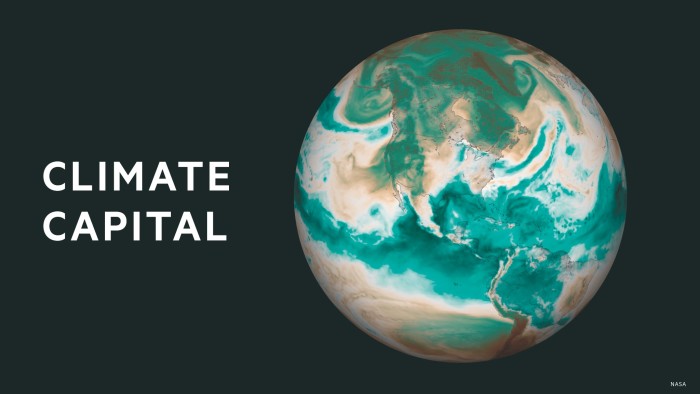Stay informed with free updates
Simply sign up to the Visual and data journalism myFT Digest — delivered directly to your inbox.
This article is first published in the FT Climate Graphic: Explained newsletter. Sign up here to receive it in your inbox each Sunday.
It has been a week of extremes across the world, from floods in Texas to heatwaves in Europe, both involving slow moving and deadly weather systems.
Scientists spent last week at the Global Tipping Points conference and Exeter Climate Forum discussing how to communicate the urgency needed to deal with the consequences of the warming world.
As they met, a heat dome was positioned over Europe for several days causing unusual June heatwaves for several countries including Spain, Greece and France.
Samantha Burgess, strategic lead for Climate at European Centre for Medium-Range Weather Forecasts, said scientific models showed the increasing frequency and intensity of extreme weather in a warmer world.
“Right now, our background level of climate change is the warmest it’s ever been. We’re running at around 1.35C to 1.4C above the pre industrial level,” she says. “We know from the scientific evidence that once we hit the 1.5C mark, we hit more extreme events, they get more intense and we get the tipping points happening as well.”
How we made it
To illustrate the effect of the exceptionally dry spring that affected north-western Europe and its impact on the continent’s network of rivers, I turned to the Global Flood Awareness System (GloFas) website which has dozens of hydrological, meteorological and flood risk variables.
I chose the 4-month forecast river flow forecast from June 30 which covers the summer months where water demand will be at its peak as a result of tourism (more showers, washing, bathing) and agricultural use.

GloFas makes all its data available via a web map services server.
[Nerd note: you access the service via a URL and then select which data type you want, it loads into your geographic information system (GIS) software, allowing you to zoom and pan just like Google maps. It has the benefit of being temporal (when available), allowing you to quickly make animations or compare across timeframes without having to download multiple files. It does have limitations — one drawback is not being able to adjust the colours in the imported layer.]
This may all sound a bit geeky, but if you’ve ever had to create a map animation by downloading dozens of individual files from a server you can understand my excitement when data is available via a web map server.

For the second map illustrating the heatwave over Europe, I used Nasa’s excellent Global Modeling and Assimilation Office database which has dozens of meteorological and climatological variables available to download.
The method to create the animation was similar to last week’s map of the heat dome over the US. (Email us at [email protected] if you missed it and we’ll forward it to you).
This time, however, I wanted to highlight the temperatures that were in excess of 35C to make it easier to track the hottest areas.
[Nerd Note 2: I used R the statistical programming language to analyse each of the 3-hourly netCDFs — a file format for storing multidimensional scientific data — and create a geoJSON file where the data was greater than 35C. These files were then loaded into Qgis and styled using a colour ramp for the temperature and a subtle hatch fill for the areas above 35C. These files were then loaded into After Effects to make annotations and create the final animation.]
The importance of the advancement and availability of the seasonal flow forecasts, such as those provided by GloFas, is that it gives government planners and reservoir operators the information for flexible and early so-called “impoundment operation rules”. These rules significantly improve water conservation, particularly during dry years.
The GloFas system and forecasts had the potential “to enhance hydropower generation and water utilisation”, a 2019 paper concluded.
In a warming world, these planning and early warning tools will be more greatly sought after.
Climate Capital

Where climate change meets business, markets and politics. Explore the FT’s coverage here.
Are you curious about the FT’s environmental sustainability commitments? Find out more about our science-based targets here
